: 2025
: 2024
: 2023
: 2022
: 2021
: 2020
: 2019
: 2018
: 2017
: 2016
: 2015
: 2014
: 2013
: 2012
: 2011
: 2010
: 2009
: 2008
: 2007
:



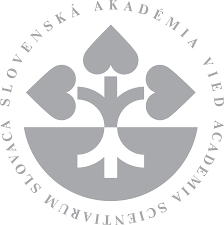


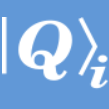
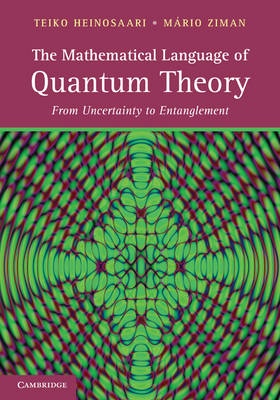
 15.12.2023 Job opening
15.12.2023 Job opening
Seeking for a postdoctoral research fellow in superconductivity Within the research project SUPERSPIN we are seeking for motivated and experience postdoctoral researcher with a solid background in the area of interacting fermionic systems: lattice models, numerical simulations, tensor networks, etc, and interested to conduct research in the area of theoretical superconductivity and phase transitions. Please send your CV (including list of publications, contacts to potential references) to denis.kochan@savba.sk before January 15th. The position is funded by the project SUPERSPIN (IMPULZ IM-2021-26). The monthly salary starts at 2200 eur and the position is offered for 12 months (with possible 12 months extension). |
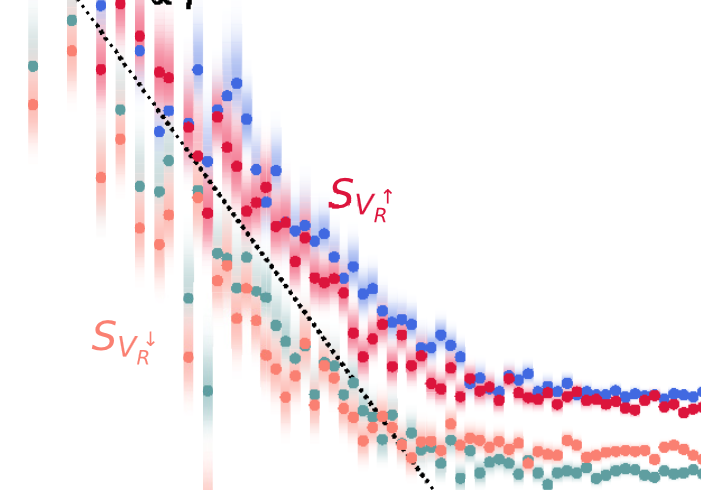 09.11.2023 Publication
09.11.2023 Publication
Spatial noise correlations beyond nearest-neighbor in 28Si/SiGe spin qubits
We detect correlations in qubit-energy fluctuations of non-neighboring qubits defined in isotopically purified Si/Si-Ge quantum dots. At low frequencies (where the noise is strongest), the correlation coefficient reaches 10% for a next-nearest-neighbor qubit-pair separated by 200 nm. Correlations with the charge-sensor signal reach up to 70%, proving that the observed noise is of electrical origin. A simple theoretical model quantitatively reproduces the measurements and predicts a polynomial decay of correlations with interqubit distance. Our results quantify long-range correlations of noise in quantum-dot spin-qubit arrays, essential for their scalability and fault tolerance.
by
Juan S. Rojas-Arias, Akito Noiri, Peter Stano, Takashi Nakajima, Jun Yoneda, Kenta Takeda, Takashi Kobayashi, Amir Sammak, Giordano Scappucci, Daniel Loss, Seigo Tarucha
Phys. Rev. Applied 20, 054024 (2023) | +++ | |
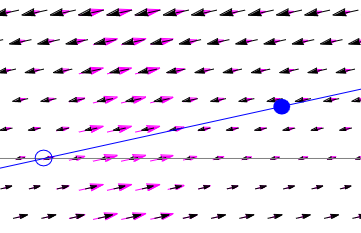 17.10.2023 Publication
17.10.2023 Publication
Dynamical nuclear spin polarization in a quantum dot with an electron spin driven by electric dipole spin resonance
We analyze the polarization of nuclear spins in a quantum dot induced by a single-electron spin that is electrically driven to perform coherent Rabi oscillations. We derive the associated nuclear-spin polarization rate and analyze its dependence on the accessible control parameters, especially the detuning of the driving frequency from the electron Larmor frequency. The arising nuclear-spin polarization is related to the Hartmann-Hahn effect known from the NMR literature with two important differences. First, in quantum dots, one typically uses a micromagnet, leading to a small deflection of the quantization axes of the electron and nuclear spins. Second, the electric driving wiggles the electron with respect to the atomic lattice. The two effects, absent in the traditional Hartmann-Hahn scenario, give rise to two mechanisms of nuclear-spin polarization in gated quantum dots. The arising nuclear-spin polarization is a resonance phenomenon, achieving maximal efficiency at the resonance of the electron Rabi and nuclear Larmor frequency (typically a few or a few tens of MHz). As a function of the driving frequency, the polarization rate can develop sharp peaks and reach large values at them. Since the nuclear polarization is experimentally detected as changes of the electron Larmor frequency, we often convert the former to the latter in our formulas and figures. In these units, the polarization can reach hundreds of MHz/s in GaAs quantum dots and at least tens of kHz/s in Si quantum dots. We analyze possibilities to exploit the resonant polarization effects for achieving large nuclear polarization and for stabilizing the Overhauser field through feedback.
by
Peter Stano, Takashi Nakajima, Akito Noiri, Seigo Tarucha, and Daniel Loss
Phys. Rev. B 108, 155306 (2023) | +++ | |
|
Noise-correlation spectrum for a pair of spin qubits in silicon
Semiconductor qubits have a small footprint and so are appealing for building densely integrated quantum processors. However, fabricating them at high densities raises the issue of noise correlated across different qubits, which is of practical concern for scalability and fault tolerance. Here, we analyse and quantify the degree of noise correlation in a pair of neighbouring silicon spin qubits around 100 nm apart. We observe strong interqubit noise correlations with a correlation strength as large as 0.7 at around 1 Hz, even in the regime where the spin–spin exchange interaction contributes negligibly. We find that fluctuations of single-spin precession rates are strongly correlated with exchange noise, showing that they have an electrical origin. Noise cross-correlations have thus enabled us to pinpoint the most influential noise in our device. Our work presents a powerful tool set to assess and identify the noise acting on multiple qubits and highlights the importance of long-range electric noise in densely packed silicon spin qubits.
by
J. Yoneda, J. S. Rojas-Arias, P. Stano, K. Takeda, A. Noiri, T. Nakajima, D. Loss, S. Tarucha
Nature Physics 19, 1793–1798 (2023), DOI: | +++ | |
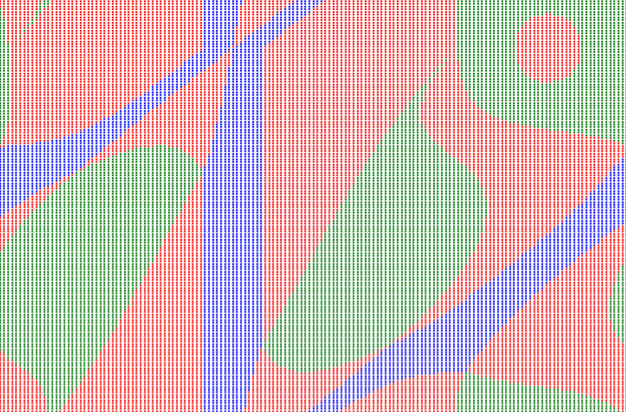 24.08.2023 Publication
24.08.2023 Publication
Minimum error discrimination of qubit states revisited
We investigate minimum-error (ME) discrimination for mixed qubit states using a geometric approach. By analyzing positive operator-valued measure (POVM) solutions and introducing Lagrange operator Γ, we develop a four-step structured instruction to find Γ for N mixed qubit states. Our method covers optimal solutions for two, three, and four mixed qubit states, including a novel result for four qubit states. We introduce geometric-based POVM classes and non-decomposable subsets for constructing optimal solutions, enabling us to find all possible answers for the general problem of minimum-error discrimination for N mixed qubit states with arbitrary a priori probabilities.
by
Mahdi Rouhbakhsh N., Seyed Arash Ghoreishi
Quantum Inf. Process 22, 323 (2023) | +++ | APVV-18-0518 (OPTIQUTE), VEGA 2/0183/21 (DESCOM) |
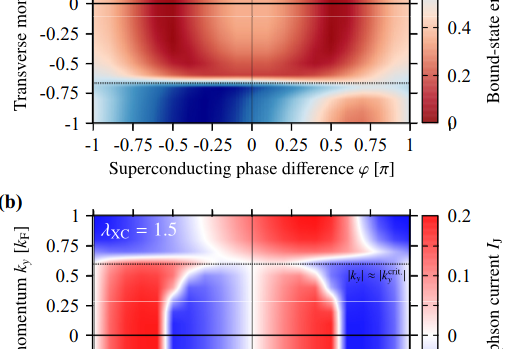 23.08.2023 Publication
23.08.2023 Publication
Microscopic study of the Josephson supercurrent diode effect in Josephson junctions based on two-dimensional electron gas
Superconducting systems that simultaneously lack space-inversion and time-reversal symmetries have recently been the subject of a flurry of experimental and theoretical research activities. Their ability to carry supercurrents with magnitudes depending on the polarity (current direction)—termed the supercurrent diode effect—might be practically exploited to design dissipationless counterparts of contemporary semiconductor-based diodes. Magnetic Josephson junctions realized in the two-dimensional electron gas (2DEG) within a narrow quantum well through proximity to conventional superconductors perhaps belong to the most striking and versatile platforms for such supercurrent rectifiers. Starting from the Bogoliubov–de Gennes approach, we provide a minimal theoretical model to explore the impact of the spin-orbit coupling and magnetic exchange inside the 2DEG on the Andreev bound states and Josephson current-phase relations. Assuming realistic junction parameters, we evaluate the polarity-dependent critical currents to quantify the efficiency of these Josephson junctions as supercurrent diodes, and discuss the tunability of the Josephson supercurrent diode effect in terms of spin-orbit coupling, magnetic exchange, and transparency of the nonsuperconducting weak link. Furthermore, we demonstrate that the junctions might undergo current-reversing 0–π-like phase transitions at large-enough magnetic exchange, which appear as sharp peaks followed by a sudden suppression in the supercurrent-diode-effect efficiency. The characteristics of the Josephson supercurrent diode effect obtained from our model convincingly reproduce many unique features observed in recent experiments, validating its robustness and suitability for
further studies.
by
Andreas Costa, Jaroslav Fabian, Denis Kochan
Phys. Rev. B 108, 054522 (2023) | +++ | IM-2021-26 (SUPERSPIN) |
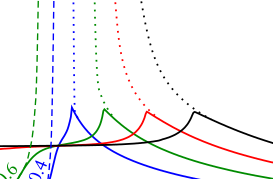 15.08.2023 Publication
15.08.2023 Publication
Anisotropic deformation of the 6-state clock model: Tricritical-point classification
The two-dimensional q-state clock models exhibit the Berezinskii–Kosterlitz–Thouless (BKT) transition for q ≥ 5 since they are a subset of the isotropic XY model. We examine the 6-state clock model with an anisotropic deformation. Selecting the 6-state Potts model as a source of the deformation, the model naturally violates the discrete rotational symmetry of the clock model. We introduce the anisotropic deformation parameter α in the clock model interpolating the clock ( α = 1) and the Potts ( α = 0) models. We employ the corner transfer matrix renormalization group method to analyze the phase transitions on the square lattice in the thermodynamic limit. Three different phases and phase transitions are identified. The phase diagram is constructed, and we determine a tricritical point at α c = 0 . 21405(4) and T c = 0 . 834017(5). Analyzing the latent heat and the entanglement entropy in the vicinity of the T c ( α c ), we observe a single discontinuous phase transition and two BKT phase transitions meeting in the tricritical point. The tricritical point exhibits a phase transition of the second order with the critical exponents β ≈ 1 / 10 and δ ≈ 14. We conjecture that an infinitesimal surrounding of the tricritical point consists of the three fundamental phase transitions, in which the first and the BKT orders gradually weaken into the second-order tricritical point.
by
Maria Polackova, Andrej Gendiar
Physica A 624, 128907 (2023) | +++ | APVV-20-0150 (PRESPEED), VEGA 2/0156/22 (QuaSiModo), SAS-MOST 108-2112-M-002-020-MY3 (TNSAA) |
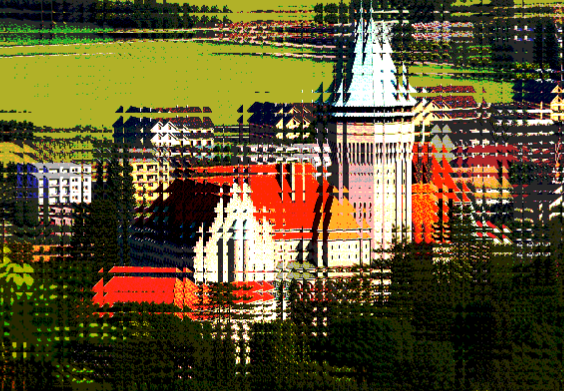 14.07.2023 Conference
14.07.2023 Conference
CEQIP 202|++⟩ workshop Some things that should not have been forgotten were lost. History became legend. Legend became myth. And for two and a half years, the CEQIP passed out of all knowledge ... Registration is closed. We are looking forward to see you in Smolenice castle in September 5-8. Meanwhile enjoy the summer. A little puzzle is to realize how the CEQIP number covers all previous CEQIP editions and makes CEQIP the superworkshop. http://ceqip.eu/2023/ |
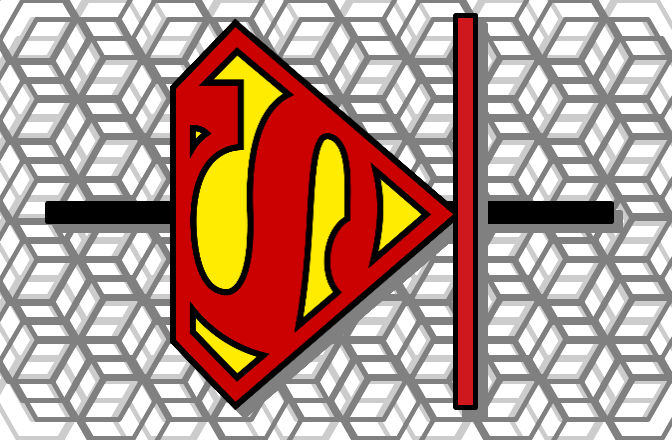 12.07.2023 Press to impress
12.07.2023 Press to impress
Sign-reversal of superconducting diode discovered Researcher from the Institute of Physics of Slovak Academy of Sciences - Dr. Denis Kochan - participated at exciting discovery reported recently in highly impacted journal Nature Nanotechnology (impact factor 40.523). Jointly with physics research teams of Professor Christoph Strunk and Professor Jaroslav Fabian (both from University of Regensburg in Germany) they have demonstrated both experimentally and theoretically a dramatic change in sign of the supercurrent diode effect. Superconducting diodes, first designed in 2021 and also known as Josephson diodes, serve as the basic building blocks for new types of superconducting circuits that may replace the resistive ones in the future. The discovery will have major implications in the field of superconductivity and superconducting spintronics and boost further the development of quantum electronics and quantum technologies. Denis Kochan is the holder of the prestigous Slovak Academy of Sciences grant IMPULZ (IM-2021-26) focused on theoretical development and understanding of the physics of superconducting spintronics.
Phys.org press release
|
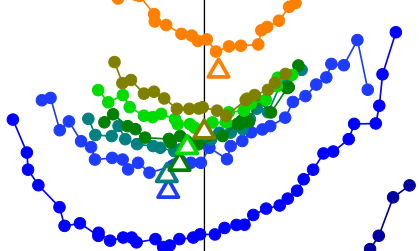 10.07.2023 Publication
10.07.2023 Publication
Sign reversal of the Josephson inductance magnetochiral anisotropy and 0–π-like transitions in supercurrent diodes
The recent discovery of the intrinsic supercurrent diode effect, and its prompt observation in a rich variety of systems, has shown that non-reciprocal supercurrents naturally emerge when both space-inversion and time-inversion symmetries are broken. In Josephson junctions, non-reciprocal supercurrent can be conveniently described in terms of spin-split Andreev states. Here we demonstrate a sign reversal of the Josephson inductance magnetochiral anisotropy, a manifestation of the supercurrent diode effect. The asymmetry of the Josephson inductance as a function of the supercurrent allows us to probe the current–phase relation near equilibrium, and to probe jumps in the junction ground state. Using a minimal theoretical model, we can then link the sign reversal of the inductance magnetochiral anisotropy to the so-called 0−π-like transition, a predicted but still elusive feature of multichannel junctions. Our results demonstrate the potential of inductance measurements as sensitive probes of the fundamental properties of unconventional Josephson junctions.
by
A. Costa, C. Baumgartner, S. Reinhardt, J. Berger, S. Gronin, G. C. Gardner, T. Lindemann, M. J. Manfra, J. Fabian, D. Kochan, N. Paradiso and C. Strunk
Nature Nanotechnology (2023) | +++ | SUPERSPIN (SAS-IM-2021-26) |
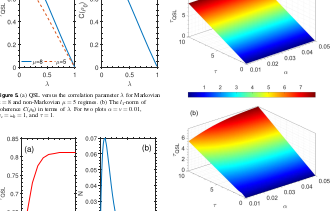 07.07.2023 Publication
07.07.2023 Publication
Quantum dynamical speedup for correlated initial states
The maximal evolution speed of any quantum system can be expressed by the quantum speed limit time. In this paper, we consider a model in which the system has a correlation with the environment. The influence of the initial correlation between the system and environment on the quantum speed limit is investigated. It is shown that the appearance of non-Markovianity effects causes the speedup of quantum evolution. Moreover, we demonstrate the dependence of quantum dynamical speedup on the quantum coherence of the correlated initial state.
by
Alireza Gholizadeh, Maryam Hadipour, Soroush Haseli, Saeed Haddadi and Hazhir Dolatkhah
Commun. Theor. Phys. 75, 075101 (2023) | +++ | NONE |
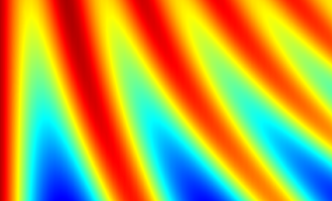 01.07.2023 Publication
01.07.2023 Publication
Study the charging process of moving quantum batteries inside cavity
In quantum mechanics, quantum batteries are devices that can store energy by utilizing the principles of quantum mechanics. While quantum batteries has been investigated largely theoretical, recent research indicates that it may be possible to implement such a device using existing technologies. The environment plays an important role in the charging of quantum batteries. If a strong coupling exists between the environment and the battery, then battery can be charged properly. It has also been demonstrated that quantum battery can be charged even in weak coupling regime just by choosing a suitable initial state for battery and charger. In this study, we investigate the charging process of open quantum batteries mediated by a common dissipative environment. We will consider a wireless-like charging scenario, where there is no external power and direct interaction between charger and battery. Moreover, we consider the case in which the battery and charger move inside the environment with a particular speed. Our results demonstrate that the movement of the quantum battery inside the environment has a negative effect on the performance of the quantum batteries during the charging process. It is also shown that the non-Markovian environment has a positive effect on improving battery performance.
by
Maryam Hadipour, Soroush Haseli, Hazhir Dolatkhah and Maryam Rashidi
Scientific Reports 13, 10672 (2023) | +++ | NONE |
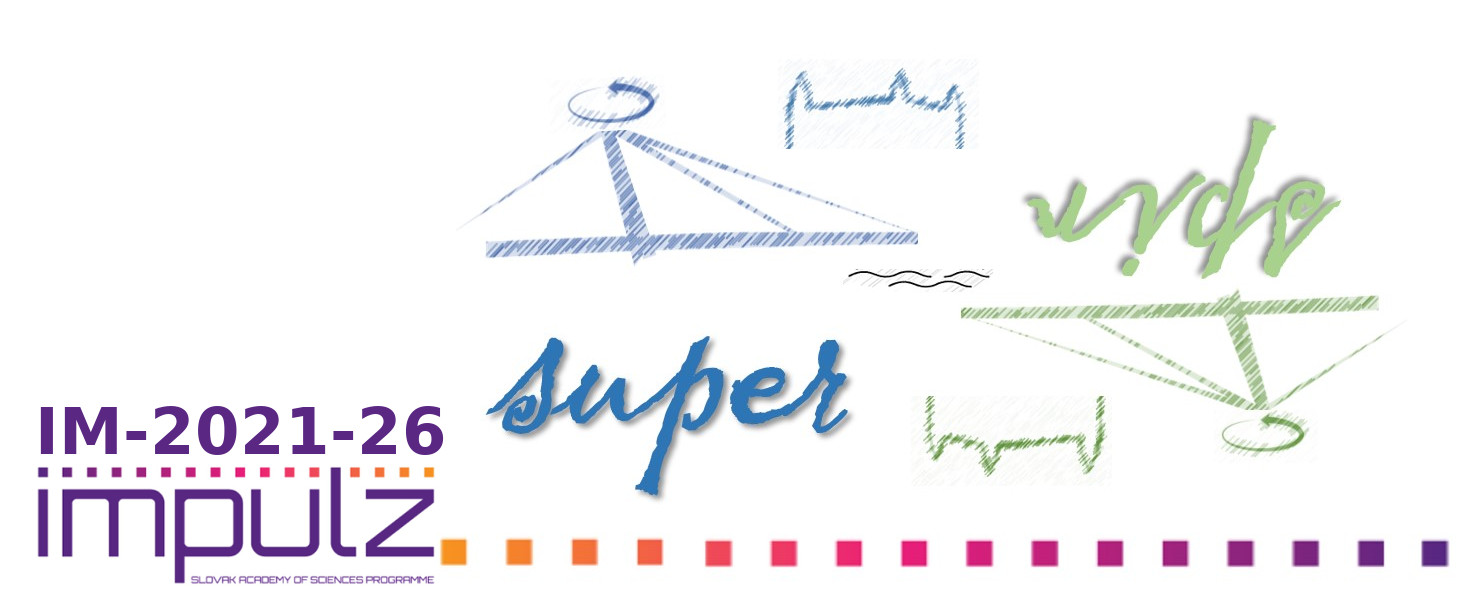 07.06.2023 Workshop
07.06.2023 Workshop
"Flat Earth" Superconductivity Miniworkshop Joint workshop of IMPULSE project SUPERSPIN-IM-26 and ERA-CHAIR-project LAMatCU held at Research Center for Quantum Information at Institute of Physics of Slovak Academy of Sciences (08/06/2023) and at Scientific park of Comenius University (09/06/2023). It aims to 1) Review important current trends and activities in the fields of superconductive and 2D materials; 2) Review current capabilities in the field of superconductivity and 2D materials in Slovakia; 3) Identify opportunities for collaboration; 4) Identify opportunities for pursuing domestic and international funding. Talks are by invitation only, but open for public. SUPERCONDUCTIVITY PART Thursday, June 8, 2023 , venue: Auditorium QUTE, Institue of Physics, Bratislava 08:15-08:45 Arriving + Welcome Coffee 08:45-09:00 Openning remarks: Denis Kochan, Milan Sýkora, Jaroslav Fabian 09:00-09:30 Peter Makk (Budapest): Supercurrent in graphene Josephson junctions 09:30-10:00 Tomáš Samuely (Košice): Ising superconductivity in bulk layered superconductors 10:00-10:30 Andreas Costa (Regensburg): Supercurrent diode effect in 2DEG-based Josephson junctions 10:30-10:40 Coffee break 10:40-11:05 Simon Reinhard (Regensburg): Sign reversal of the supercurrent diode effect in ballistic Josephson junctions 11:05-11:30 Max Geier (Copenhagen): Non-reciprocal superconductivity in planar superconductor-semiconductor heterostructures 11:30-11:50 Denis Kochan (Bratislava): Anisotropic vortex squeezing in synthetic Rashba superconductors 11:50-13:15 Lunch break 13:15 – 13:30 Promo (open to public): mobility program IMPULZ - Slovak Academy of Sciences 13:30-13:55 Andrew Higginbotham (Vienna): Exploring superconductor-semiconductor hybrids by adding Josephson junctions 13:55-14:20 Neven Barišić (Zagreb): High-Tc cuprates – story of two electronic subsystems 14:20-14:45 Pavol Szabo (Košice): Superconducting – insulating transitions in highly disordered superconducting thin films 14:45-15:10 Szabolcs Csonka (Budapest): Realization of Andreev molecule in superconductor - parallel InAs nanowire hybrid 15:10-15:20 Coffee break 15:20-15:45 Wolfgang Lang (Vienna): Vortex zoology in nanopatterned copper-oxide superconductors 15:45-16:10 Marko Milivojević (Bratislava): General classification of possible superconducting pairings with Rashba spin-orbit coupling: an example of Ising superconductor NbSe2 16:10-16:35 Jaroslav Tóbik (Bratislava): Dynamical symmetry breaking in magnetic systems 16:35-17:00 Peter Stano (Tokyo/Bratislava): K-dot-p models of holes in low-dimensional nanostructures 17:00-17:10 Coffee break 17:10-18:00 Panel discussion (closed session): Opportunities for Central European / Danube Region collaborations Discussion lead: Neven Barišić (Zagreb) Panelists: Szabolcs Csonka (Budapest), Wolfgang Lang (Vienna), Jaroslav Fabian (Regensburg), Peter Šiffalovič (Bratislava), Ján Minár (Plzeň), Vladimír Cambel (Bratislava), Milan Sýkora (Bratislava) 18:30- Group dinner 2D MATERIALS PART Friday, June 9, 2023, venue: Science Park, Comenius University, Bratislava 08:30-09:00 Arriving + Welcome Coffee 09:00-09:15 Milan Sýkora (Bratislava): Establishing Laboratory for Advanced Materials at Comenius University 09:15-09:45 Jaroslav Fabian (Regensburg): Current trends in physics of 2D materials 09:45-10:15 Peter Šiffalovič (Bratislava): TBD 10:15-10:25 Coffee break 10:25-10:50 Ľuboš Mitaš (North Carolina): Quantum Monte Carlo for systems with strong correlations and spin-orbit interactions 10:50-11:10 Ivan Štich (Bratislava): DFT and Quantum Monte Carlo calculations of 2D materials 11:10-11:35 Marius Kadek/ Michal Repiský (Tromsø): First-principles modelling of 2D materials using relativistic all-electron Dirac-Kohn-Sham theory based on Gaussian-type orbitals 11:35-12:10 Martin Gmitra (Košice): Aspects of proximity effects in van der Waals heterostructures 12:10-12:45 Ján Minár (Plzeň): Electronic structure, correlations and excited states of topological quantum materials 12:45-14:00 Lunch break 14:00-14:25 Michaela Sojková (Bratislava): Preparation of 2D Materials by CVD and PVD methods 14:25-14:50 Milan Sýkora (Bratislava): 2D Nanomaterials Prepared by Bottom-up Chemical Methods 14:50-15:15 Martin Hulman (Bratislava): Raman Spectroscopy of 2D Materials 15:15-15:40 Viera Skákalová (Bratislava): Conductance fluctuations in graphene and quantum Hall states 15:40-15:50 Coffee break 15:50-16:50 Discussion (closed session): Current trends and collaborations opportunuties (lead by Jaroslav Fabian) The main goals of the session are to discuss following questions: 1.) Given the current trends in 2D materials research and the local capabilities, are there opportunities for meaningful local collaboration(s)? 2.) What are the opportunities for pursuing domestic and international funding? 3) What are the best strategies for pursuing those opportunities? 16:50-17:00 Milan Sýkora: Closing notes 17:30 Group dinner 
Organized by Denis Kochan (denis.kochan@savba.sk, http://www.quantum.physics.sk/rcqi/) and Milan Sýkora (sykoram@uniba.sk, https://fns.uniba.sk/lam/en/). |
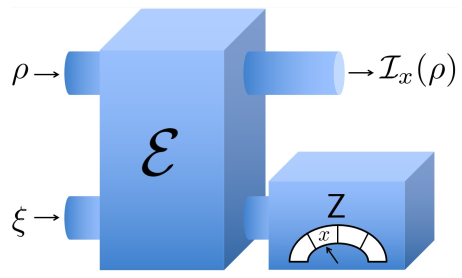 05.06.2023 Publication
05.06.2023 Publication
Measurement disturbance and conservation laws in quantum mechanics
Measurement error and disturbance, in the presence of conservation laws, are analysed in general operational terms. We provide novel quantitative bounds demonstrating necessary conditions under which accurate or non-disturbing measurements can be achieved, highlighting an interesting interplay between incompatibility, unsharpness, and coherence. From here we obtain a substantial generalisation of the Wigner-Araki-Yanase (WAY) theorem. Our findings are further refined through the analysis of the fixed-point set of the measurement channel, some extra structure of which is characterised here for the first time.
by
M. Hamed Mohammady, Takayuki Miyadera, and Leon Loveridge
Quantum 7, 1033 (2023) | +++ | OPEQ (19MoRePro0027) |
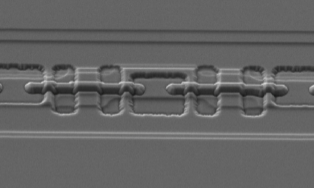 22.05.2023 Publication
22.05.2023 Publication
Reflection-enhanced gain in traveling-wave parametric amplifiers
The operating principle of traveling-wave parametric amplifiers is typically understood in terms of the standard coupled mode theory, which describes the evolution of forward propagating waves without any reflections, i.e., for perfect impedance matching. However, in practice, superconducting microwave amplifiers are unmatched nonlinear finite-length devices, where the reflecting waves undergo complex parametric processes, not described by the standard coupled mode theory. Here, we present an analytical solution for the TWPA gain, which includes the interaction of reflected waves. These reflections result in corrections to the well-known results of the standard coupled mode theory, which are obtained for both three-wave and four-wave mixing processes. Due to these reflections, the gain is enhanced and unwanted nonlinear phase modulations are suppressed. Predictions of the model are experimentally demonstrated on two types of unmatched TWPA, based on coplanar waveguides with a central wire consisting of (i) a high kinetic inductance superconductor, and (ii) an array of 2000 Josephson junctions.
by
S. Kern, P. Neilinger, E. Il’ichev , A. Sultanov , M. Schmelz , S. Linzen , J. Kunert, G. Oelsner, R. Stolz, A. Danilov, S. Mahashabde, A. Jayaraman, V. Antonov, S. Kubatkin, and M. Grajcar
Physical Review B 107, 174520 (2023) | +++ | SiUCs (QuantERA) |
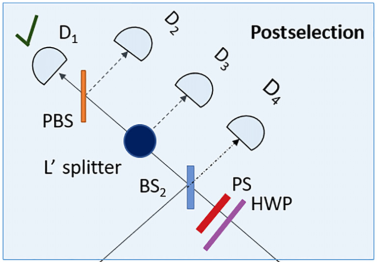 22.05.2023 Publication
22.05.2023 Publication
Isolating noise and amplifying the signal using weak quantum measurement and postselection
The so-called quantum Cheshire cat is a phenomenon in which an object, identified with a “cat”, is dissociated from a property of the object, identified with the “grin” of the cat. We propose a thought experiment, similar to this phenomenon, with an interferometric setup, where a property (a component of polarization) of an object (photon) can be separated from the object itself and can simultaneously be amplified when it is already decoupled from its object. We further show that this setup can be used to dissociate two complementary properties, e.g., two orthogonal components of polarization of a photon and identified with the grin and the snarl of a cat, from each other and one of them can be amplified while being detached from the other. Moreover, we extend the work to a noisy scenario, effected by a spin-orbit-coupling–like additional interaction term in the Hamiltonian for the measurement process, with the object in this scenario being identified with a so-called confused Cheshire cat. We devise a gedanken experiment in which such a “confusion” can be successfully dissociated from the system, and we find that the dissociation helps in the amplification of signals.
by
Ahana Ghoshal, Soham Sau, Debmalya Das, and Ujjwal Sen
Phys. Rev. A 107, 052214 (2023) | +++ | NONE |
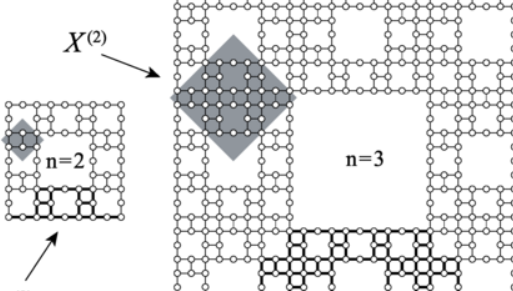 17.04.2023 Publication
17.04.2023 Publication
Local and global magnetization on the Sierpiński carpet
The phase transition of the classical Ising model on the Sierpiński carpet, which has the fractal dimension log38=1.8927, is studied by an adapted variant of the higher-order tensor renormalization group method. The second-order phase transition is observed at the critical temperature Tc=1.478. Position dependence of local functions is studied through impurity tensors inserted at different locations on the fractal lattice. The critical exponent β associated with the local magnetization varies by two orders of magnitude, depending on lattice locations, whereas Tc is not affected. Furthermore, we employ automatic differentiation to accurately and efficiently compute the average spontaneous magnetization per site as a first derivative of free energy with respect to the external field, yielding the global critical exponent of β=0.135.
by
Jozef Genzor, Andrej Gendiar, and Tomotoshi Nishino
Phys. Rev. E 107, 044108 (2023) | +++ | PRESPEED (APVV-20-0150), TNSAA (SAS-MOST No. 108-2112-M-002-020-MY3), QuaSiModo (VEGA 2/0156/22) |
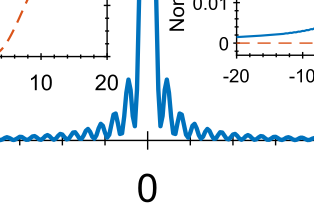 22.03.2023 Publication
22.03.2023 Publication
Quantum speed limit of Jaynes-Cummings model with detuning for arbitrary initial states
The quantum speed limit (QSL) of the Jaynes-Cummings model with detuning for arbitrary initial states is investigated. We mainly focus on the influences of the detuning, width of Lorentzian spectral density, and coherence of the initial state on the non-Markovian speedup evolution in an open system. It is found that even in the Markovian regime, increasing the detuning parameter leads to quantum speedup. Moreover, we reveal that the QSL has an inverse relation with the population of the initial excited state. Notably, we show that the QSL depends on the quantum coherence of the system’s initial state such that the maximal coherent state can saturate its bound.
by
Yasin Shahri, Maryam Hadipour, Saeed Haddadi, Hazhir Dolatkhah, Soroush Haseli
Physics Letters A 470, 128783 (2023) | +++ | NONE |
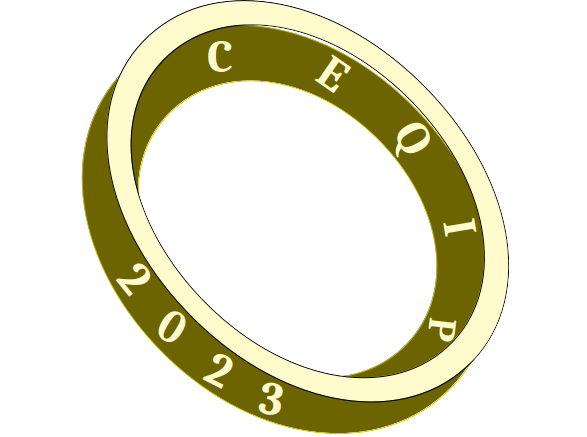 01.03.2023 Conference
01.03.2023 Conference
CEQIP is coming ... Some things that should not have been forgotten were lost. History became legend. Legend became myth. And for two and a half years, the CEQIP passed out of all knowledge ... Save the dates in September 5-8. We booked the venue at Small Eneetse. More details will be announced soon. |
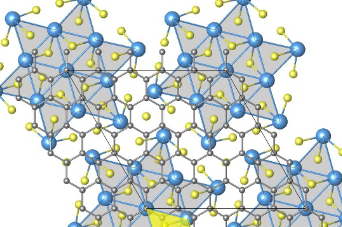 23.02.2023 Publication
23.02.2023 Publication
Spin–orbit and exchange proximity couplings in graphene/1T-TaS2 heterostructure triggered by a charge density wave
Proximity-induced fine features and spin-textures of the electronic bands in graphene-based van der Waals heterostructures can be explored from the point of tailoring a twist angle. Here we study spin–orbit coupling and exchange coupling engineering of graphene states in the proximity of 1T-TaS 2 not triggering the twist, but a charge density wave (CDW) in 1T-TaS 2 —a realistic low-temperature phase. Using density functional theory and effective model we found that the emergence of the CDW in 1T-TaS 2 significantly enhances Rashba spin–orbit splitting in graphene and tilts the spin texture by a significant Rashba angle—in a very similar way as in the conventional twist-angle scenarios. Moreover, the partially filled Ta d-band in the CDW phase leads to the spontaneous emergence of the in-plane magnetic order that transgresses via proximity from 1T-TaS 2 to graphene, hence, simultaneously superimposing along the spin–orbit also the exchange coupling proximity effect. To describe this intricate proximity landscape we have developed an effective model Hamiltonian and provided a minimal set of parameters that excellently reproduces all the spectral features predicted by the first-principles calculations. Conceptually, the CDW provides a highly interesting knob to control the fine features of electronic states and to tailor the superimposed proximity effects—a sort of twistronics without twist.
by
Karol Szałowski, Marko Milivojević, Denis Kochan and Martin Gmitra
2D Materials 10, 025013 (2023) | +++ | SUPERSPIN (IMPULZ IM-2021-26), QuaSiModo (VEGA 2/0156/22) |
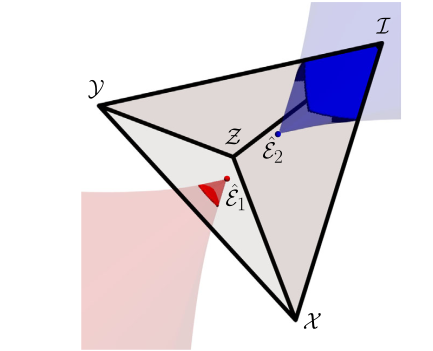 21.02.2023 Publication
21.02.2023 Publication
Quantum Dynamics is Not Strictly Bidivisible
We address the question of the existence of quantum channels that are divisible in two quantum channels but not in three or, more generally, channels divisible in n but not in n þ 1 parts. We show that for the qubit those channels do not exist, whereas for general finite-dimensional quantum channels the same holds at least for full Kraus rank channels. To prove these results, we introduce a novel decomposition of quantum channels which separates them into a boundary and Markovian part, and it holds for any finite dimension. Additionally, the introduced decomposition amounts to the well-known connection between divisibility classes and implementation types of quantum dynamical maps and can be used to implement quantum channels using smaller quantum registers.
by
David Davalos and Mario Ziman
Physical Review Letters 130, 080801 (2023) | +++ | OPTIQUTE (APVV-18-0518), DESCOM (VEGA-2/0183/21), Stefan Schwarz Support Fund (DD) |
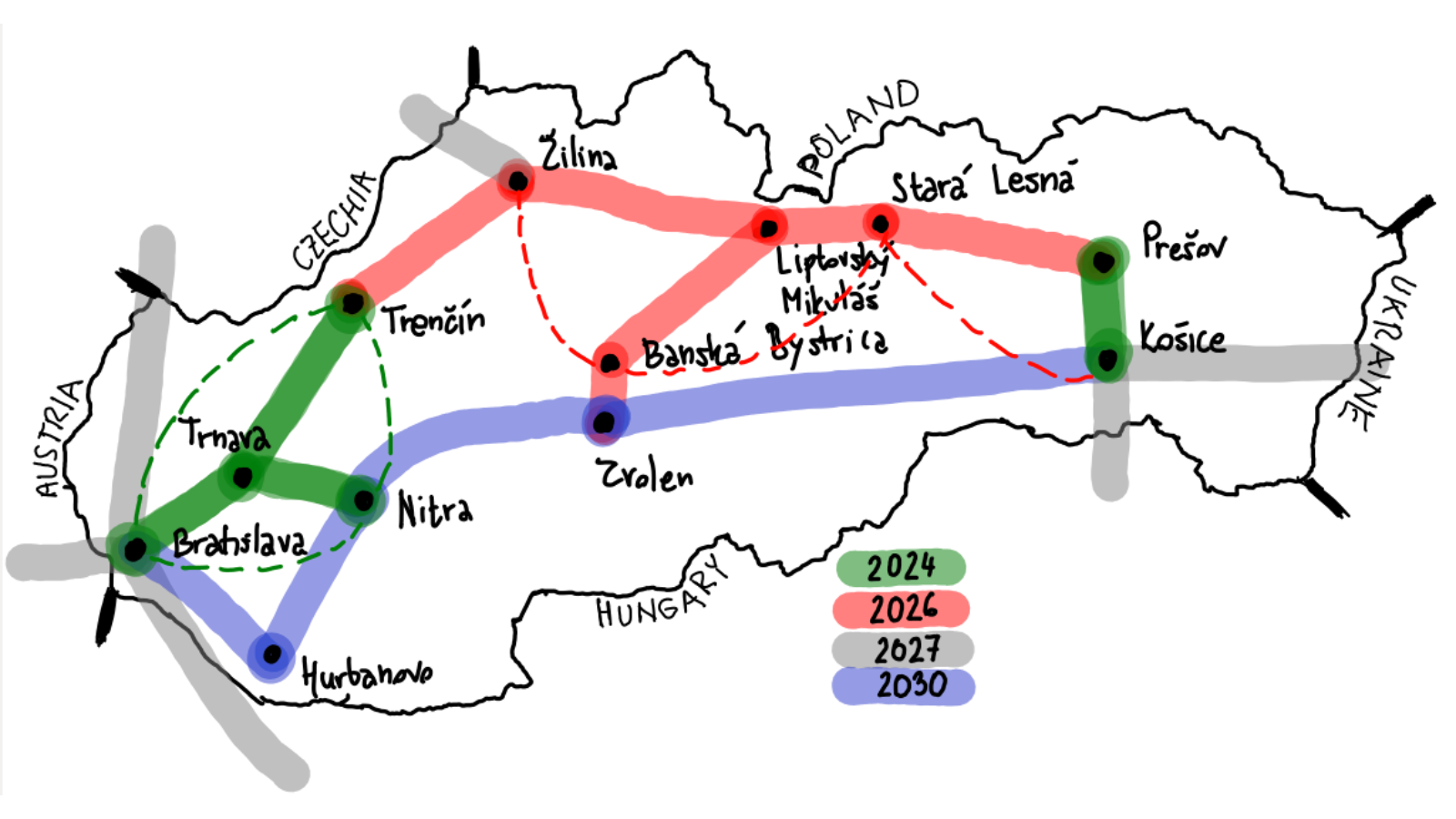 24.01.2023 Job opening
24.01.2023 Job opening
skQCI Call for postdocs and PhD students Newly established Experimental photonics quantum communication group is seeking for new team members. The goal of skQCI project ΞΞΞ is to establish the backbone of quantum communication infrastructure in Slovakia and quantum photonics plus communication research program. The project needs researchers at all phases of their carrier. Especially, we are looking for motivated postdocs and PhD students (see also information hΞΞΞre willing to work in the area of single photon photonics, quantum software cryptosystems and quantum network design. Pls send your applications (research statement and CV) directly to Djeylan Aktas (djeylan.aktas@savba.sk). The sooner the better. The time is ticking ... |
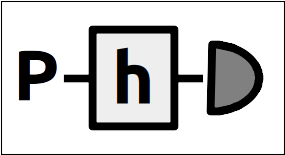 24.01.2023 Job opening
24.01.2023 Job opening
Seeking for quantum PhD students in quantum technologies and foundations ΞΞΞ Are you a master/engineer student fascinated by quantum physics or future of quantum technologies? Want to run quantum computers, build quantum network, or encrypt quantum messages? Interested to join our research team for four years of you life? That is the time it takes to do the research and become expert (with PhD title) in quantum simulations, or optical quantum communication networks, or quantum security, or foundations of quantum phenomena. All of these fields are waiting for your contribution. Currently, we have open several PhD positions at our Institute. We are open for submissions until 28/02/2023 (28/03/2023 for some of the topics - see more details, but the sooner the better) with PhD starting in September 2023. If interested, as the first step, please get in contact with a potential PhD advisor (send him your cv, motivation letter and contacts to potential references), discuss the subject and follow his/her instructions. Do not wait until the submission deadline and do this as soon as possible. If you are uncertain who to contact, just choose any of us. We are all happy to help you to select your quantum destiny. \ΞΞΞ |
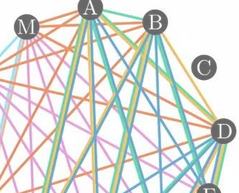 11.01.2023 Publication
11.01.2023 Publication
Entanglement distribution quantum networking within deployed telecommunications fibre-optic infrastructure
Quantum networks have been shown to connect users with full-mesh topologies without trusted nodes. We present advancements on our scalable polarisation entanglement-based quantum network testbed, which has the ability to perform protocols beyond simple quantum key distribution. Our approach utilises wavelength multiplexing, which is ideal for quantum networks across local metropolitan areas due to the ease of connecting additional users to the network without increasing the resource requirements per user. We show a 10 user fully connected quantum network with metropolitan scale deployed fibre links, demonstrating polarisation stability and the ability to generate secret keys over a period of 10.8 days with a network wide average-effective secret key rate of 3.38 bps.
by
M. J. Clark, O. Alia, R. Wang, S. Bahrani, M. Peranić, D. Aktas, G. T. Kanellos, M. Loncaric, Ž. Samec, A. Radman, M. Stipcevic, R. Nejabati, D. Simeonidou, J. G. Rarity, S. K. Joshi
Proc. SPIE 12335, Quantum Technology: Driving Commercialisation of an Enabling Science III, 123350E (2023) | +++ | |


